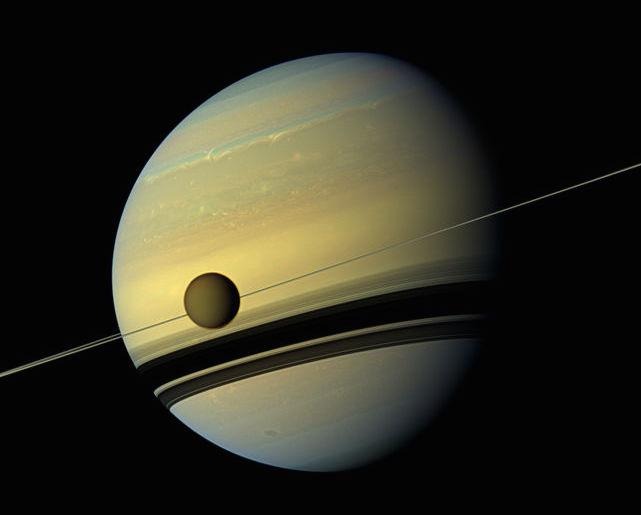New Research Suggests Saturn's Rings & Moons May Be Younger Than Dinosaurs
The most iconic feature of the planet Saturn — it's wide set of rings — along with its many icy moons may actually be much younger than previously thought. A new study published by the SETI Institute says that Saturn's rings and inner moons may be no more than 100 million years old, meaning they likely formed when dinosaurs roamed the Earth. That would make them about 4 billion years younger than the planet Saturn itself.
The scientists, lead by head researcher Matija Cuk, determined the moons' age with the use of computer modeling and identifying their past behavior. Moons' orbits and tilts are determined by a planet's gravity, and with Saturn having 62 known satellites, they also affect each other.
In studying three of Saturn's most important moons, Tethys, Dione, and Rhea, the scientists found that their orbits haven't changed nearly as much as expected, meaning they don't have the behaviors typical of moons that have been interacting with one another and orbiting a planet for a long period of time.

As Cuk explained in a statement, "Moons are always changing their orbits. That's inevitable. But that fact allows us to use computer simulations to tease out the history of Saturn's inner moons. Doing so, we find that they were most likely born during the most recent 2 percent of the planet's history."
Unfortunately this kills the theory that the oceans of Saturn's moon Enceladus might contain some sign of life, as it took several hundreds of millions of years for the earliest organisms on Earth to form. However, the SETI Institute researchers note that this discovery only applies to the rings and moons near the planet Saturn, specifically from Rhea (which orbits at around 327,500 miles away) and closer.
The study says that the planet's most visible rings were probably formed from the same rubble that resulted in the creation of the inner moons, making them about the same age.
None of this would apply to Titan, Saturn's largest moon, or other major satellites that orbit much farther out. This is important as Titan is NASA's next best bet on finding life in Saturn's system. The moon is described as being one of the few worlds most similar to Earth, and is believed to be about the same age as Saturn itself, raising hopes it might be home to methane-based life.
SOURCE: SETI Institute
